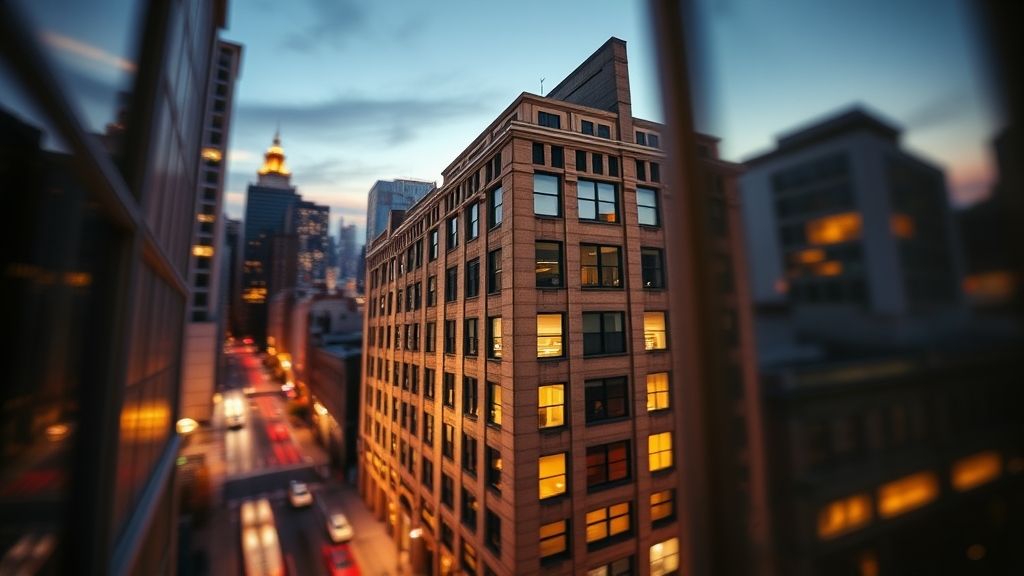San Francisco Ross Building Sells at 68% Loss, Exposing Deepening Office Market Crisis

Key Takeaways
- The sale of 799 Market St. at a 68% loss highlights the severe challenges in San Francisco's office market.
- Office vacancies have soared to 34.7%, reflecting a similar trend to SoMa's previous downturn.
- Despite retail sectors like Ross Dress for Less showing resilience, the city's business landscape is in turmoil.
Unraveling San Francisco's Office Market Crisis
San Francisco's office market faces a grim reality as 799 Market St. sells at a harrowing 68% loss, echoing through iconic Union Square. Office vacancies soar to 34.7%, mirroring SoMa's previous decline. Investors wrestle with this seismic shift as housing delinquencies jump 30%.
Retail resilience offers a glimmer of hope, with Ross Dress for Less renewing its lease, but the struggle persists. The city's iconic business fabric is unraveling. Quick action is essential to uncover further insights.
San Francisco's Office Market Struggles
The fall of a once-prized jewel on Market Street marks a grim tale for San Francisco's real estate market. At 799 Market St., the 145,000-square-foot building's recent sale for $44 million starkly contrasts its 2016 purchase price of approximately $133 million. A 68% loss for ASB Real Estate Investments is a scene right out of a Gothic economic tragedy.
Sinking sale prices reflect the challenges in today’s office space market. Once bustling with activity, downtown San Francisco now faces rising vacancy rates, which escalated by 1.2% to a staggering 34.7% in the first quarter. As Market Street's beacon dims, its vacant 52,000 square feet of office space epitomizes a larger crisis—a scene akin to the deterioration seen in SoMa District a decade ago. Similar strains are mirrored in the financially devastated U.S. housing market, with widespread unaffordability crises impacting the stability of real estate investments. With housing delinquencies up 30% in key markets, the turbulence is set to continue.
Sansome Street Advisors, the building’s new owner, is gambling on a long game recovery strategy. In acquiring this iconic address, they join a narrative that tells of market volatility and the hope of rejuvenation against spiraling market trends. The rise in high-demand cities like Austin further exacerbates the competitive environment, as investors face parallel challenges in adapting to evolving market conditions. The sale price per square foot, at about $300, paints a stark picture of diminished trust in office real estate values, echoing the broader tremors in San Francisco's market dynamics. As seen in falling retail assets, real estate investors are making ruthless moves to capitalize on the current market situation. Financial contributions to property and long-term investment strategies may play a role in eventual recovery.
Pre-pandemic comparisons underscore the urgency. The building sold for less than a third of its value before COVID-19 turned urban environments into ghostly spaces, shifting the dynamic of work-from-SoMa to work-from-home. The office market crisis has deep roots, further exacerbated by increasing vacancies across neighborhoods, with Union Square's rate creeping up to 22.8%.
Yet, amidst this chaos, retail performance tells a different story. Ross Dress for Less, occupying 55,000 square feet, stands resilient. They’ve renewed their lease for another decade, with future extensions potentially leading into 2045, underscoring an unwavering belief in Market Street’s eventual revival.
The persistent retail interest in the area renews hope, determined to pull back foot traffic to this San Francisco artery. Meanwhile, in SoMa, the tech renaissance blooms. New developments, fueled by AI investments, signal fresh lifeblood coursing through a tech-savvy vein, clothed in ambitions of creating an "AI Alley."
The presence of major AI players like OpenAI, Notion, and Lambda hints at a split recovery—while traditional office spaces languish, specialized sectors thrive. Major players like Wharton School's consideration of a nearby building speaks volumes about selective optimism.
Sansome Street Advisors' strategic acquisition resembles a chess move against the backdrop of market volatility. By seizing discounted opportunities, they reflect a trend seen in cycles of real estate: braving the immediate storm to stake a claim on future sunshine. This hope clashes with the current climate, as fear looms over a city's heart.
San Francisco's office market bears the scars of a deepening crisis. A test of resolve for investors and developers. Pressured by challenging conditions, the city's iconic skyline whispers caution, reminding all—abandon hope or stay the course—for this is no mere market fluctuation, but a tale of survival.
Assessment
Isn't it quite eye-opening how the sale of the Ross Building, at a loss this steep, highlights a growing predicament in San Francisco’s office market? The city's investors are facing some tough truths. Iconic landmarks, like the Golden Gate Bridge, known for symbolizing innovation and resilience, now seem to be overshadowed by empty office spaces and financial woes.
Clearly, something needs to change, and fast! If we don't see decisive steps being taken soon, the ripple effect might worsen, resonating the urgency felt on SoMa streets. Every second counts here. Let's act before time slips through our fingers.
https://www.unitedstatesrealestateinvestor.com/san-francisco-ross-building-sells-68-percent-loss-office-market-crisis/?fsp_sid=2901
Comments
Post a Comment